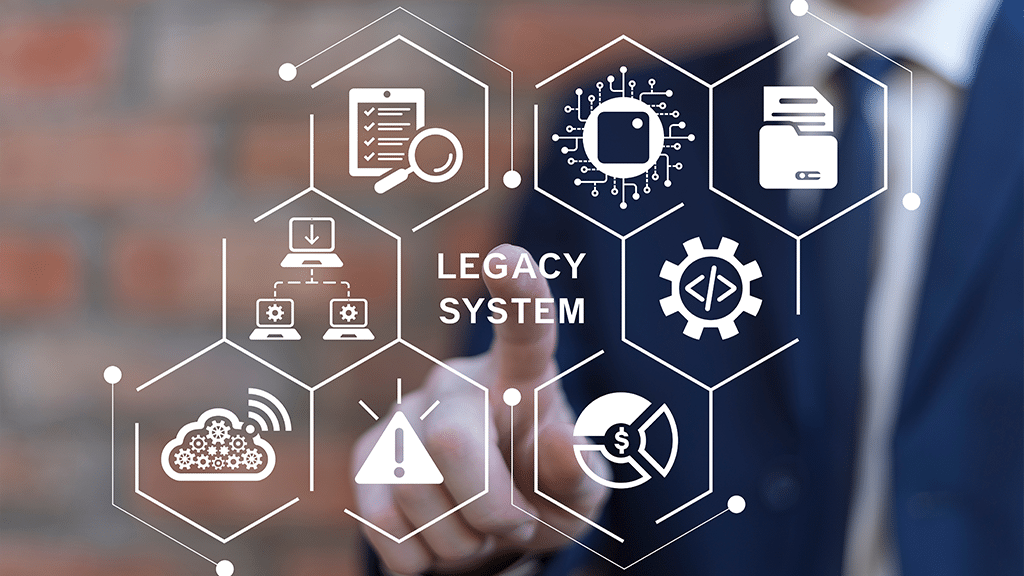
Global Content Lead - Tech & Consulting
Subscribe to the newsletter
Data serves as the foundation for critical decision-making, but it’s true value can only be realized through effective data analysis. When it comes to interpreting data effortlessly, there’s no better approach than taking advantage of the power of data visualisation. It empowers organizations to navigate the overwhelming abundance of information, transforming it into actionable intelligence.
The data visualisation market was estimated to reach a market size of 7.76 billion U.S. dollars by 2023. This growth is expected at a compounded annual growth rate (CAGR) of 9.47 percent throughout the forecast period. These numbers emphasize the importance of data visualisation’s undeniable value across industries.
Moreover, data visualisation extends beyond the realm of dataanalytics, finding use in everyday tasks. This blog will explore the concept of data visualisation, its importance, and how organizations can benefit from it.
What is data visualisation?
Data visualisation presents complex data in a visual format, such as charts, graphs, and interactive visuals. It aims to make data more understandable and accessible by leveraging visual elements to communicate patterns, trends, and relationships.
By transforming raw data into visually engaging representations, data visualisation enables effective analysis, decision-making, and communication of insights across various industries and domains.
With organizations generating massive amount of raw data each year, a wealth of new information emerges. Using the right visuals, data visualisation can uncover valuable trends that hold immense potential for business success.
Why is data visualisation important?
Data visualisation is important because it simplifies complex data, making it easier to understand and interpret a, but also facilitates the effective communication of insights, promoting shared understanding and alignment among stakeholders. Moreover, lack of data visualisation can result in information overload and challenges such as:
- Overwhelming data complexity: Without visual aids, deciphering complex data can be challenging, leading to confusion and difficulty in extracting meaningful insights.
- Poor communication: Text-heavy reports, or spreadsheets often need to convey the full story within data, making it difficult for stakeholders to understand and act upon the information.
- Missed patterns and trends: Patterns and trends hidden within data may only be noticed with visual representation, depriving organizations of valuable insights and opportunities.
- Reduced efficiency and productivity: Trying to comprehend data without visual aids can be time-consuming and inefficient, hindering productivity and slowing decision-making processes.
- Ineffective data-driven decision-making: With visual cues, decision-makers may be able to grasp the implications of data, resulting in suboptimal choices or missed opportunities.
This shows that data visualisation is necessary to facilitate understanding in the organization and empower it to overcome such challenges.
Benefits of data visualisation: How does it transform information?
Data visualisation can help decision-makers in several ways especially when considering business strategies and goals. Some prominent ways it can improve data insights and benefit users include:
- Enhanced data comprehension: Data visualisation simplifies complex data, making it more accessible and understandable.
- Improved decision-making: Visualisations enable quick identification of trends and key insights, facilitating data-driven decision-making.
- Increased engagement: Visual representations make data more relatable, enhancing communication and storytelling.
- Enhanced collaboration: Interactive visualisations promote collaborative data analysis and knowledge sharing among teams.
- Detection of patterns and trends: Visualisations reveal underlying relationships and dependencies, aiding in trend analysis and forecasting.
- Progress monitoring: Real-time dashboards enable the monitoring of performance and progress against key metrics and goals.
Good and bad data visualisation
Good data visualisation presents complex information clearly and concisely, enabling viewers to grasp patterns effortlessly. It employs appropriate chart types and colour schemes, enhancing visual appeal while ensuring accurate data representation.

Bad data visualisation, on the other hand, complicates information, leading to confusion among users. It may employ inappropriate chart types or misleading scales, distorting the data’s true representation. Such visualisations fail to convey meaningful insights and hinder effective decision-making. This ultimately undermines the purpose of presenting data in the first place.

Best practices for effective data visualisation
Clear and concise data visualisation is important for representing insights. An effective visualisation should allow users to grasp information at first or second glance.
Here are some best practices that organizations can follow to enhance user experience, promote engagement and maximize the impact of data visualisations:
- Know your audience: Understanding your audience is fundamental to creating relevant and impactful visualisations. Consider their level of expertise, domain knowledge, and the specific insights they seek. Tailor your visualisations to meet their needs and preferences, ensuring the message is effectively communicated.
- Choose the right chart types and visual representations: The appropriate chart types and visual representations are needed to effectively convey your data. Consider the data attributes, relationships, and the story you want to tell. Bar charts, line graphs, scatter plots, and heat maps are just a few examples of visualisations that can be chosen based on the nature of your data.
- Simplify and declutter visualisations for clarity: Avoid clutter and unnecessary elements that can distract from the main message. Keep the visualisations clean, focusing on the key data points, and remove any non-essential decorations or embellishments.
- Use colour, contrast, and typography effectively: Colour, contrast, and typography play vital roles in data visualisation. Use colours strategically to highlight key elements and create visual hierarchy. Ensure appropriate contrast for legibility and readability. Select fonts and typography styles that are clear and readable across different devices and platforms.
- Incorporate interactivity and user-friendly features: Interactive elements add depth and engagement to data visualisations. Incorporate interactive features such as tooltips, zooming, filtering, and drill-down options to allow users to explore the data further. Ensure the interactivity is intuitive, user-friendly, and enhances the user experience without overwhelming or distracting.
- Ensure accessibility and inclusivity in data visualisations: Make data visualisations accessible to all users, including those with disabilities. Ensure compatibility with screen readers, provide alternative text for images, and use appropriate colour schemes accessible to individuals with colour vision deficiencies. Consider inclusivity in the design, ensuring that visualisations are understandable and usable by diverse users.
Industries that can benefit from effective data visualisation
Another reason why data visualisation is important in big data isbecause it has wide-ranging applications and benefits across differentindustries. Visualizing data empowers organizations to uncover insights, anddrive meaningful outcomes, whether it’s finance, healthcare, marketing, supplychain, education, or retail. Let’s look at how data visualisation can benefitdifferent sectors:
Banking and finance
In banking and finance industry, data visualisation can provide valuable insights into financial performance, market trends, and risk analysis. Visualisations of financial data, such as balance sheets, income statements, and investment portfolios, enable stakeholders to make informed decisions, optimize strategies, and identify emerging opportunities or potential risks.
Healthcare
Data visualisation plays a critical role in healthcare by helping professionals understand patient data, analyse medical records, and identify trends in diseases and treatments. Visual representations of health data can support diagnosis, treatment planning, and population health management. Interactive dashboards and visual analytics empower healthcare providers to monitor patient outcomes, track performance metrics, and improve healthcare delivery.
Marketing and advertising
Data visualisation is invaluable in the marketing and advertising industry, where understanding consumer behaviour, market trends, and campaign performance is crucial. Visualisations enable marketers to analyse customer data, track campaign metrics, and visualize customer journeys. They aid in identifying patterns, targeting the right audience, optimizing marketing strategies, and measuring effectiveness of advertising efforts.
Supply chain and logistics
Effective data visualisation enhances supply chain and logistics management by providing real-time insights into inventory levels, transportation routes, and demand patterns. Visualisations enable supply chain managers to monitor key performance indicators, identify bottlenecks, optimize routes, and improve operational efficiency. Interactive visualisations can help track shipments, predict demand, and facilitate better decision-making across the supply chain.
Education
In the education sector, data visualisation supports educators, administrators, and policymakers in understanding student performance, identifying areas for improvement, and evaluating educational programs. Visualizing academic data, attendance records, and learning outcomes can help educators track progress, identify trends, and personalize instruction. It enables data-driven decision-making to enhance student success and improve educational outcomes.
Retail and E-commerce
Data visualisation is instrumental in the retail and e-commerce industry for analysing customer behaviour, inventory management, and sales performance. Visualisations of sales data, customer segmentation, and product performance help retailers gain insights into consumer preferences, optimize inventory levels, and tailor marketing strategies. Real-time dashboards enable monitoring of key metrics, identifying opportunities, and responding quickly to market trends.
How can Confiz help?
Data visualisation speeds up data processing by presenting information in useful visual formats. It enables organization to simplify complex data and gain insightful perspectives for effective decision-making. These benefits explain why data visualisation is so important for any business across industries such as finance, healthcare, marketing, supply chain, education, retail and others.
Want to empower your business with data? At Confiz, we offer a comprehensive solution to help your organization maximize opportunities from valuable data insights. Specializing in transforming big data into visually appealing and interactive dashboards, our expert data visualisation team delivers solutions that align perfectly with your business goals. Our expertise lies in delivering relevant and visually captivating management information, empowering you to make informed decisions confidently.
So, contact us at marketing@confiz.com and allow our experts to help you transform the way you visualise data.



